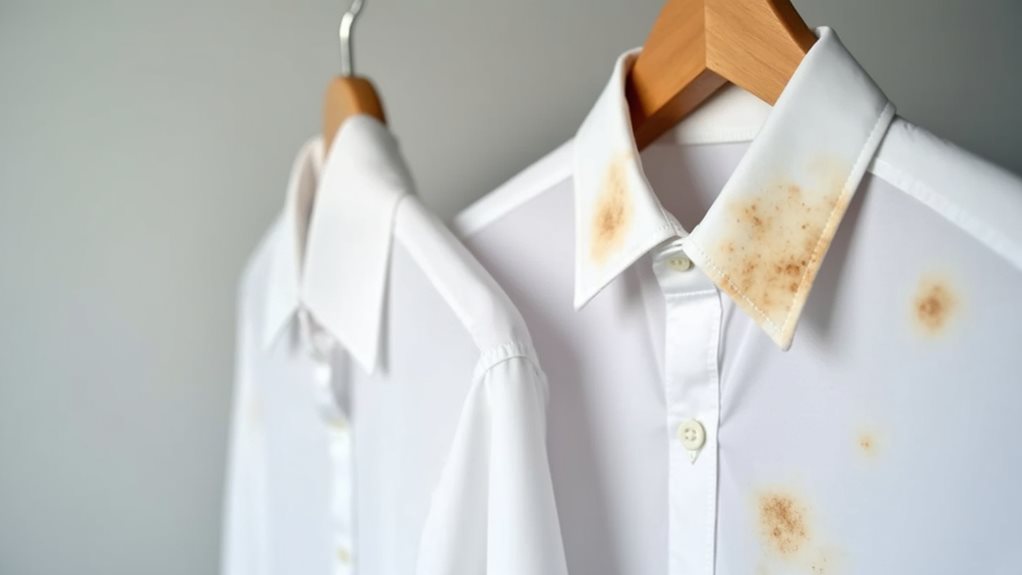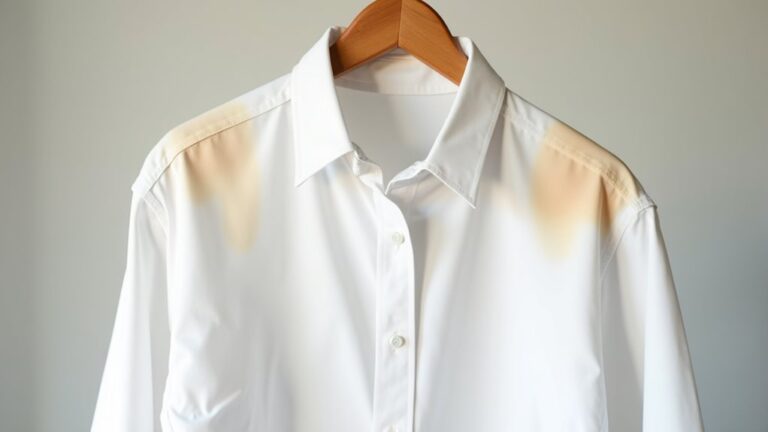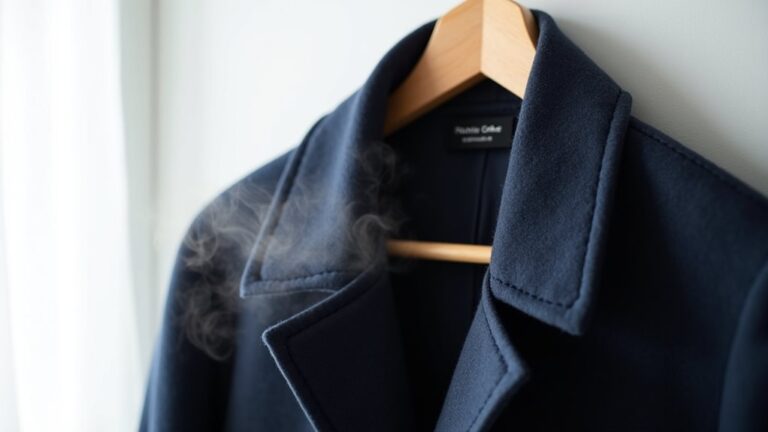Yes, dry cleaning can effectively remove most sweat stains through specialized solvents that target the chemical reaction between your perspiration and aluminum-based deodorants. Professional cleaners use enzyme-based solutions and pre-treatment techniques that dissolve oily compounds binding stains to fabric fibers, something your home baking soda paste simply can’t match. However, deeply set-in stains might only lighten rather than disappear completely, and success depends on how quickly you act after staining occurs – there’s more to reflect on about timing and prevention strategies.
Understanding What Causes Sweat Stains on Clothing
While I’ve definitely learned this lesson the hard way after ruining more white shirts than I’d care to admit, sweat stains aren’t actually caused by sweat alone—they’re the result of a frustrating chemical cocktail that forms when your body’s natural perspiration, which contains water, salts, proteins, and urea, meets up with the aluminum compounds in your deodorant or antiperspirant.
This reaction creates those stubborn yellow stains that seem impossible to remove from fabric, and here’s the kicker: the more you perspire and the stronger your deodorants, the worse the discoloration becomes.
Understanding this protein-heavy composition is essential because it determines which cleaning methods will actually work—enzyme-based treatments target these proteins specifically, while traditional dry cleaning mightn’t be your best bet.
Since sweat stains are water-based stains, they present particular challenges for dry cleaning processes that rely on chemical solvents rather than water to break down and remove stains.
How the Dry Cleaning Process Tackles Sweat and Deodorant Residue
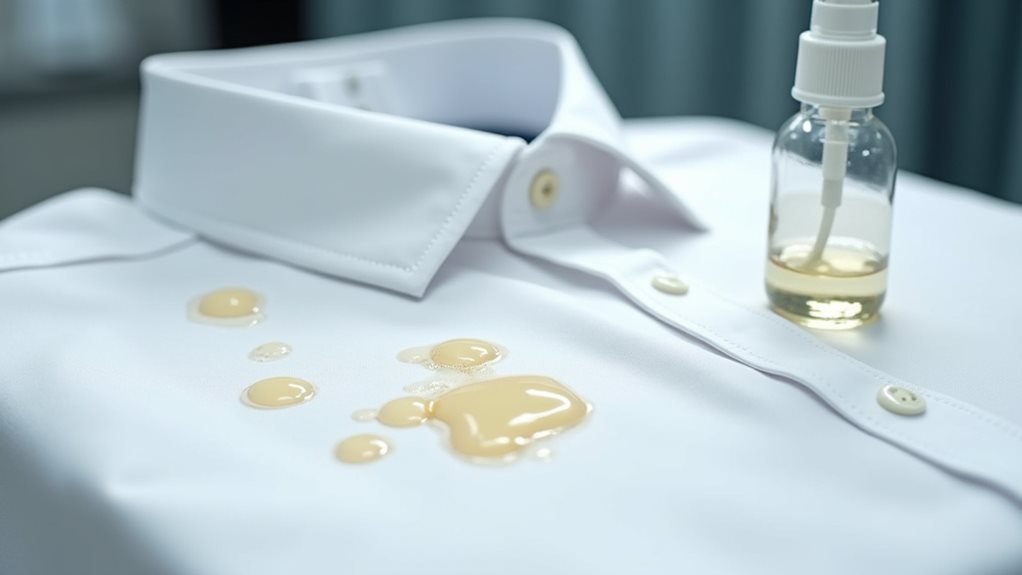
Since I’ve spent countless dollars at my local dry cleaner trying to salvage my favorite work shirts, I can tell you that the dry cleaning process works fundamentally differently than your home washing machine when it comes to attacking those protein and oil-based residues that create sweat stains.
Professional dry cleaning services use specialized solvents that target the chemical composition of deodorants, breaking down those stubborn yellowish stains that regular detergent can’t touch.
What really makes the difference is their pre-treatment techniques – they’ll assess your delicate fabrics and apply targeted solutions before the main cleaning cycle.
These dry cleaning solvents excel at dissolving the oily compounds that bind stains to fibers, making stain removal far more effective than water-based methods could ever achieve.
The effectiveness of removing sweat stains depends on several factors including the age of stains, fabric type, and how deeply the residue has set into the garment fibers.
Effectiveness of Professional Dry Cleaning Vs Home Treatment Methods
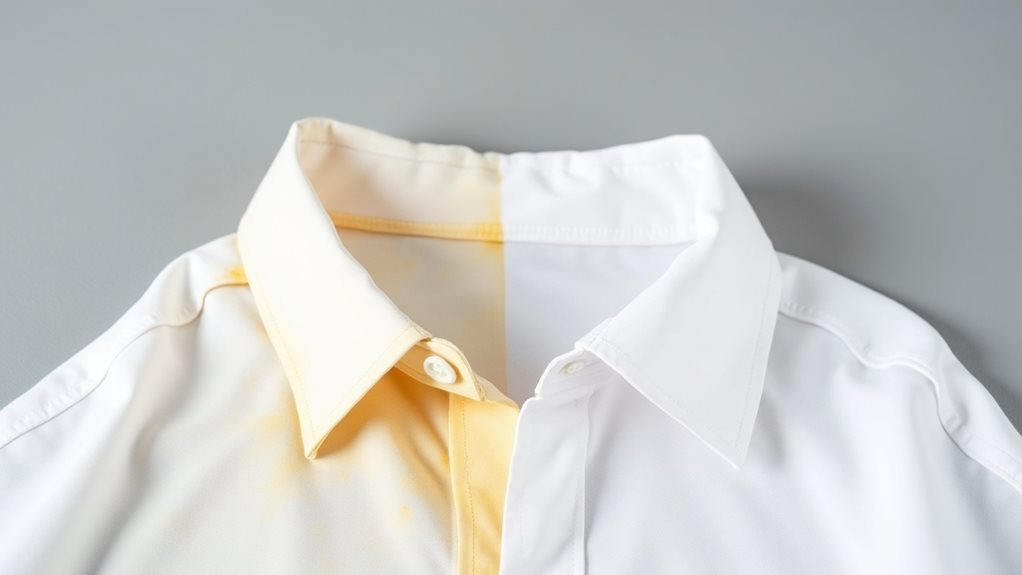
After trying everything from Pinterest DIY remedies to my grandmother’s secret vinegar concoctions, I’ve learned that there’s a pretty considerable gap between what you can accomplish at home versus what professional dry cleaners can pull off with their arsenal of specialized equipment and solvents.
While your baking soda paste might tackle surface-level sweat stains, it simply can’t compete with enzyme-based solutions that professional dry cleaners use to break down protein stains at the molecular level.
Professional enzyme treatments work at the molecular level to destroy protein-based stains that home remedies simply can’t touch.
The removal effectiveness really depends on fabric type and prompt treatment, but honestly, I’ve watched stubborn stains that laughed at my home treatment methods completely disappear after one trip to the pros.
Since sweat stains are water-soluble stains, some dry cleaners will use additional water-based treatments alongside their chemical solvents to ensure complete removal.
Sometimes admitting defeat and calling in the experts is the smartest move you can make!
When Dry Cleaning May Not Remove Stubborn or Set-In Stains
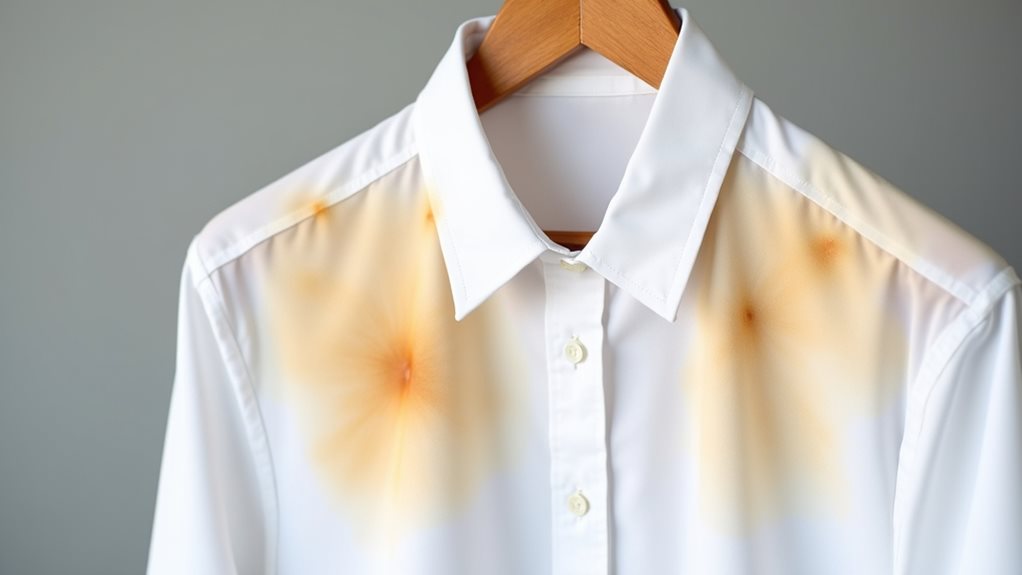
Although I hate to be the bearer of disappointing news, even the most skilled dry cleaners sometimes meet their match when it comes to those stubborn, set-in stains that have basically moved in and made themselves at home in your favorite garments.
When sweat stains bond deeply with fabric fibers over time, professional cleaners might only achieve lightening rather than complete stain removal, which honestly feels like getting a participation trophy when you wanted first place 😅.
Older sweat stains become particularly resistant because the proteins and oils create their own little fortress, while antiperspirent residues add another layer of complexity requiring specialized treatments that don’t always work.
This is exactly why prompt treatment matters so much—delayed cleaning often leads to permanent discoloration that even professionals can’t fully reverse.
The dry cleaning solvents excel at removing the oil-based components of sweat but struggle more with the water-soluble salts and proteins that make up other parts of perspiration stains.
Prevention Strategies to Minimize Future Sweat Stain Problems
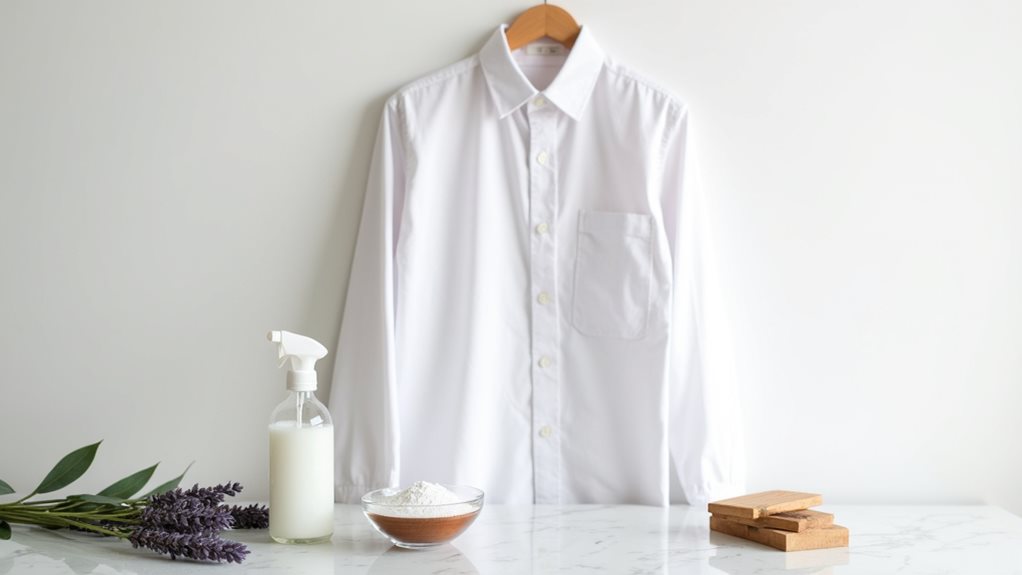
Rather than throwing in the towel on those stubborn stains, let’s flip the script and focus on preventing future sweat stain disasters before they’ve a chance to ruin your wardrobe.
I’ve learned through countless wardrobe mishaps that prevention beats cure every time, especially when you’re dealing with those dreaded armpit stains that seem determined to destroy your favorite shirts.
The secret lies in creating smart barriers between your skin and clothing while choosing the right materials and products.
Smart prevention trumps stubborn stain removal every time – the right barriers and fabric choices protect your wardrobe before damage strikes.
Here’s your prevention toolkit:
- Wear undershirts religiously – they absorb sweat before it reaches your outer garments
- Choose breathable fabrics like cotton or linen that allow proper air circulation
- Switch to aluminum-free deodorants to prevent those stubborn yellow stains from forming
While dry cleaning can be effective for treating existing stains, be aware that traditional PERC solvents may leave chemical residues on your garments that require proper airing out before wearing.
Trust me, these simple strategies will save you countless dry cleaning bills!

